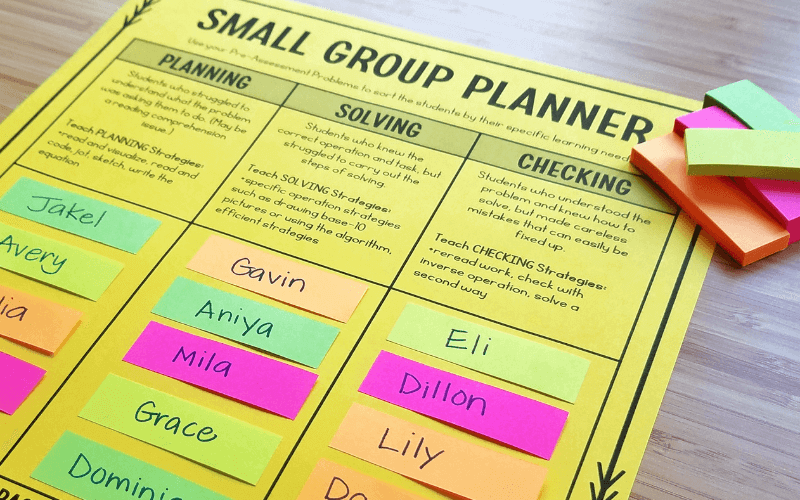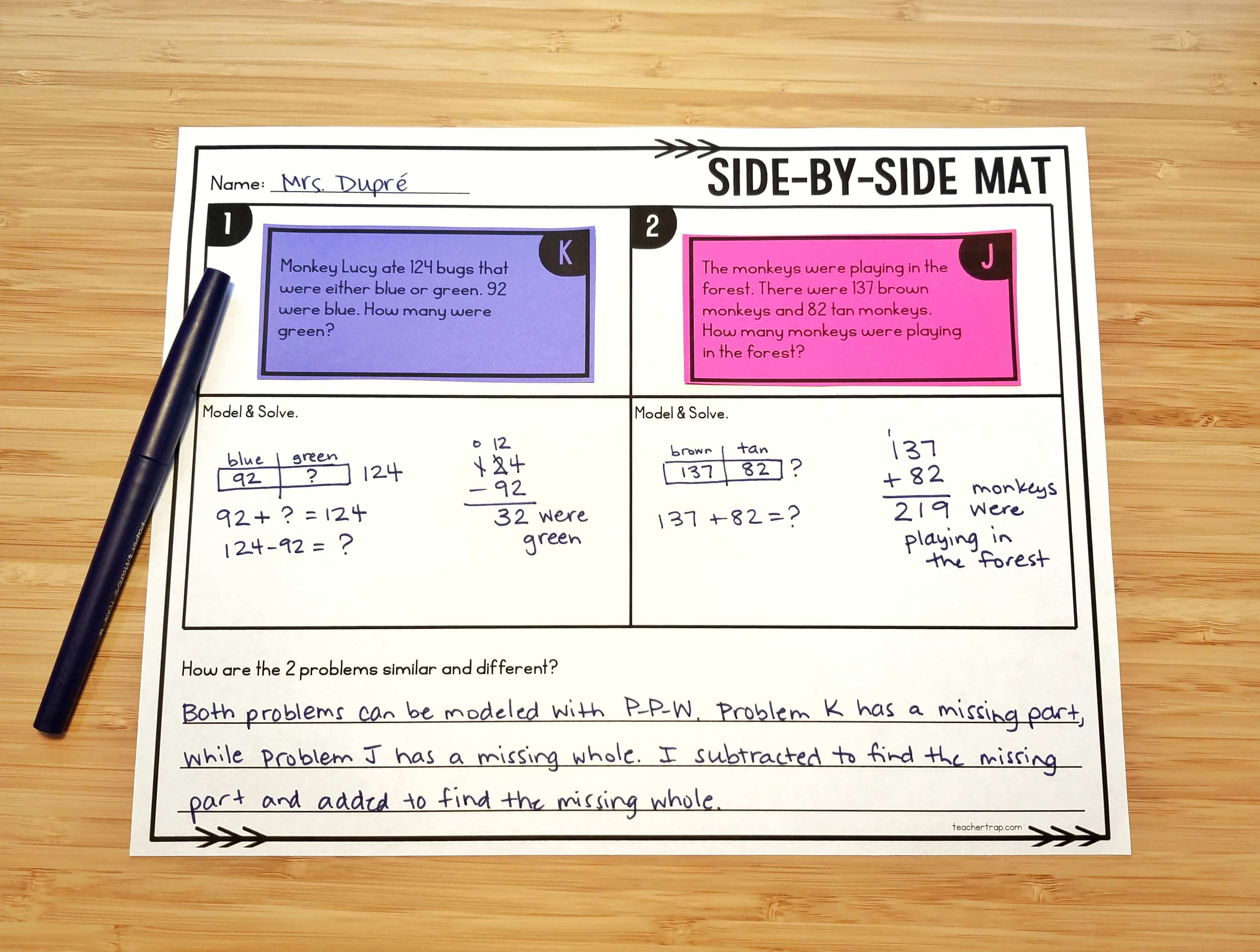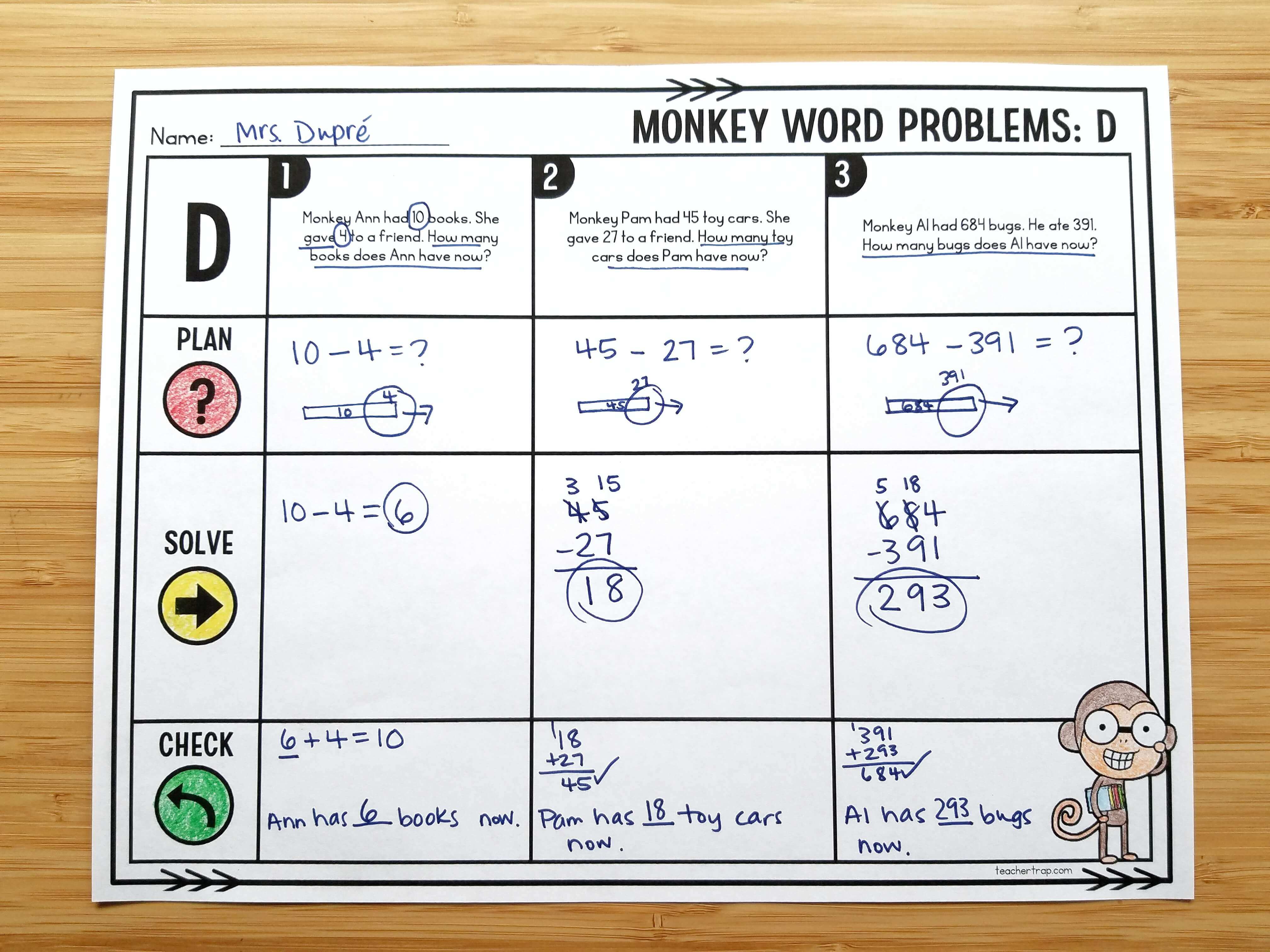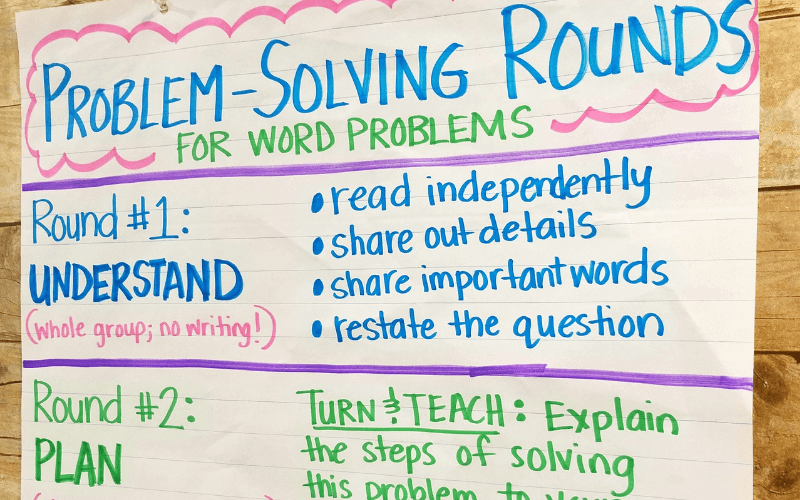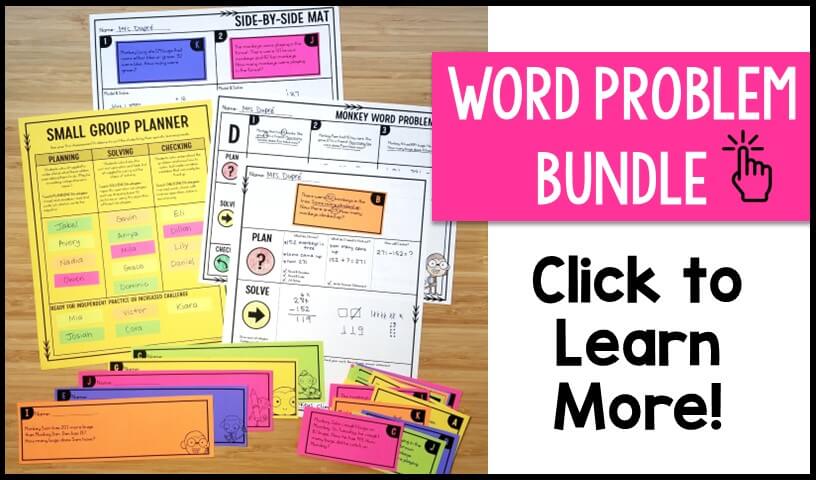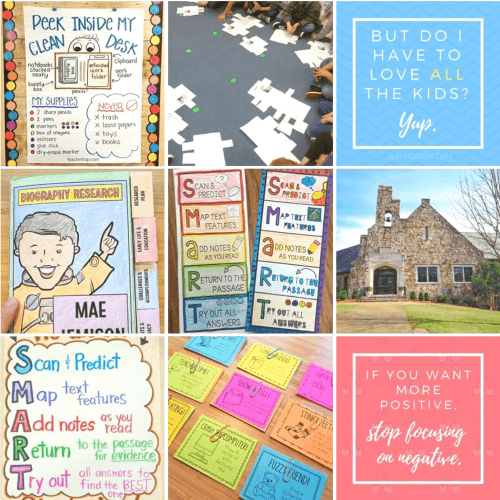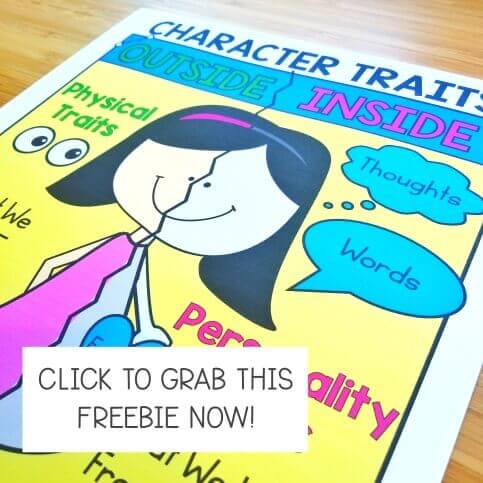Word problems are a special kind of math challenge. Not only do they require computation skills, but they also test students’ reading comprehension and problem-solving abilities. This can be the perfect storm of frustration for many kids. But it doesn’t have to be so hard! Today, I’m sharing easy word problem solving strategies for helping students finally master the word problem!

Word Problem Solving Strategies That Work
Commonly taught word problem solving strategies usually include memorizing a rote set of steps such as circling important information or underlining keywords. These are helpful steps, but they do not address the more complex thinking required for word problems.
Feel free to teach those handy habits, but for better student outcomes, focus on building comprehension, critical thinking skills, and mathematical reasoning.
Reading Comprehension as a Word Problem Strategy
Many people think of math and reading as completely separate skills. But with word problems, reading comprehension plays a crucial role in attacking the problem. Kids have a bad habit of reading word problems like they are just passing through words to get to the numbers. Blah, blah, blah. 127! Blah, blah, blah, 52! They search for numbers and then rush to DO something with those numbers.
If our students are going to find success with word problems, they need to use their good reading strategies! Teach your students to:
Reread: Slow down and reread as many times as needed
Visualize: Imagine what is taking place in the problem. What is the order of events?
Ask questions: What do I know? What do I need to find out?
Make predictions: What would be a reasonable result? Do I expect the answer to be more or less than the numbers I’m given?
Teach a Word Problem-Solving Routine
Help students form effective thinking habits by teaching and practicing a problem-solving process. Rather than a rote set of steps like CUBES (Circle the numbers, Underline the question, Box key words, etc.) build a THINKING routine that helps the child learn the critical thinking skills involved in solving real problems.
The routine itself uses powerful word problem solving strategies as students begin to internalize this process and become confident with each step.
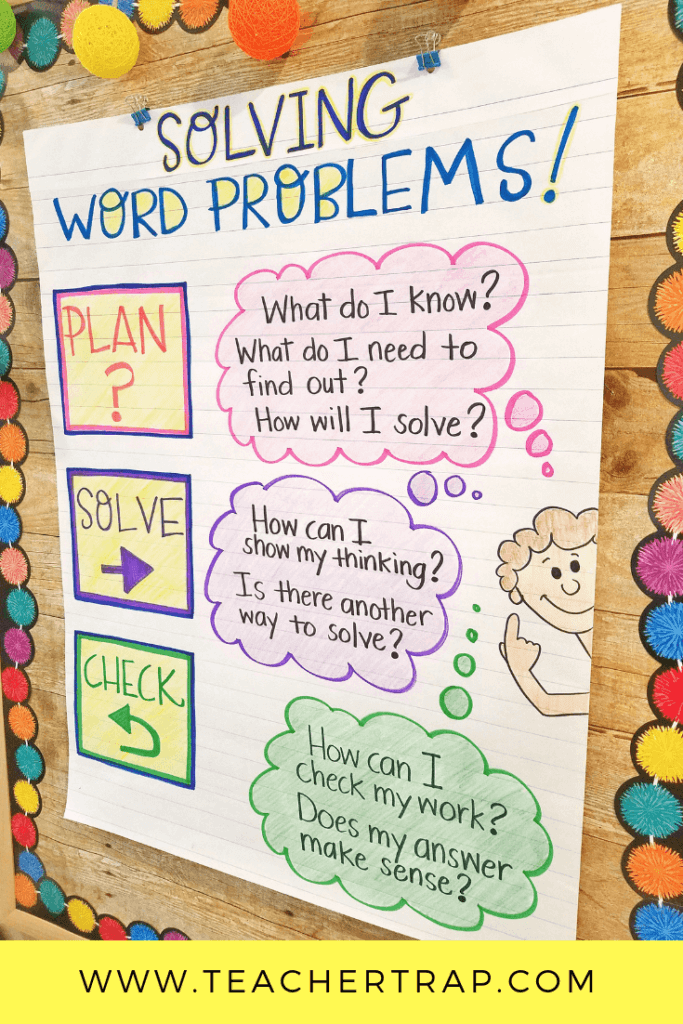
I’ve found a simple PLAN, SOLVE, CHECK format works best. With young children, the biggest issue I find is that they simply skip (or struggle with) one of these steps, which causes a breakdown in their ability to solve the problem.
In my classroom, I use Guided Math Groups that are formed based on students’ success in each of those those three categories (planning strategies, solving strategies, checking strategies.) **You can grab a FREE Word Problem Thinking Mat along with Winter themed problems in my Winter Word Problem Solving Sampler Pack.
Compare Word Problem Structures
One of my favorite word problem solving strategies is something I call “Side-by-Sides.” This is simply where we solve two different problems and then compare the structure of the problem and the operation used.
When students model, solve, and compare the different problem types, they grow a deeper understanding of how word problems work. This is a powerful way to help students compare the different operations (addition, subtraction, multiplication, division) or compare the different formats of problems that use the same operation (such as subtracting as comparison vs subtracting as a decrease.)
**You can grab FREE samples of side-by-side problems in the Preview File of my Side-by-Side Word Problems Pack or grab a FREE Side-by-Side Mat in the Preview File of my Tiered Word Problems Pack for 2nd Grade or 3rd Grade.
Start With the Easy Version of the Word Problem
Differentiation isn’t just for reading! Many students get overwhelmed when they see large numbers in word problems, so why not meet them where they are? I use what I call “Tiered Word Problems” to help students understand word problem structures and grow confidence before tackling the on-level version.
In my Word Problem Solving Bundle, I provide all kinds of leveled word problems – Tiered Problem Pages, Task Cards, Side-by-Sides, Exit Tickets, and more, all increasing in challenge from first through fifth grade. This allows for scaffolding of instruction by student need, and throughout the school year.
Use Word Problem-Solving Rounds
Problem-Solving Rounds changed my math instruction forever! This dynamic routine encourages students to move through the problem-solving process I mentioned at the beginning of this post, to explain their thinking, and to reflect on other possible strategies and solutions.
Since using Problem-Solving Rounds, my students are more confident with word problems, have a deeper understanding of problem-types, and are better able to tackle new and challenging tasks.
The basic structure of the rounds follows the Problem-Solving Process I shared above.
In Round 1, students read and discuss the problem with a focus on UNDERSTANDING. In Round 2, they turn to a partner and explain how they PLAN to solve the problem. They SOLVE the problem independently in Round 3, and in Round 4 they work with a partner and as a whole class to CHECK and reflect on their work. For a detailed guide to this process, check out my blog post all about Problem-Solving Rounds.
I’d love to hear from you! Comment below with your favorite word problem solving strategies?






